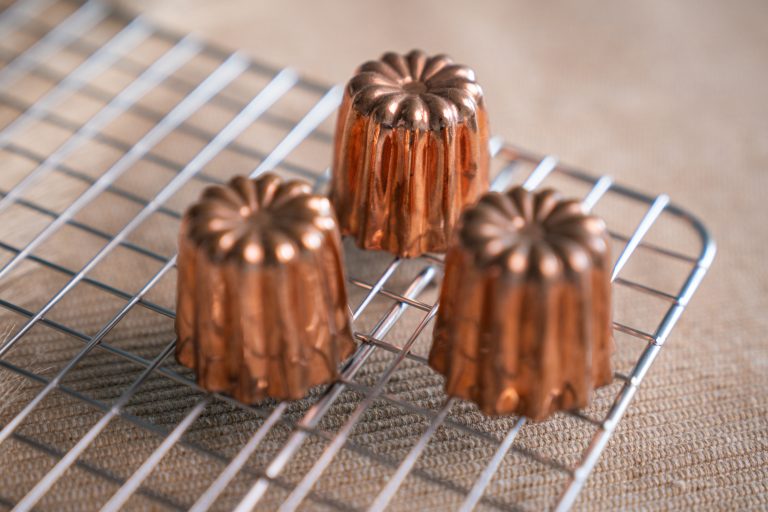
Do you love the crispy, caramelised exterior and soft, custardy interior of a classic cannelé but crave something a bit zesty? Then these mini lemon cannelés are perfect for you! They combine the beloved texture of traditional cannelés with a refreshing hint of lemon, making them a delightful treat for any occasion.
Whether you’re enjoying them with your afternoon tea or serving them at a gathering, these bite-sized delights are sure to impress. Plus, they’re as fun to make as they are to eat! Let’s dive into this recipe and bring a little French flair to your kitchen.
Ingredients |
|---|
| 1 lemon |
| 250 ml whole milk |
| 1 egg |
| 1 egg yolk |
| 30 g unsalted butter |
| 50 g flour |
| 100 g sugar |
1. Prep the Lemon: Grate the zest of the lemon and squeeze out the juice. Set aside.
2. Heat the Milk: In a saucepan, combine the milk, butter, lemon juice, and zest. Bring to a boil, then remove from heat and let it cool slightly.
3. Mix Dry Ingredients: In a bowl, mix the flour and sugar.
4. Combine with Eggs: Add the egg and egg yolk to the dry ingredients, mixing well.
5. Incorporate the Milk: Gradually pour the warm milk mixture into the flour mixture, stirring constantly to avoid lumps. Continue until the batter is smooth.
6. Rest the Batter: Cover the batter and refrigerate for 24 hours. This resting period is crucial for the texture.
7. Preheat the Oven: When ready to bake, preheat your oven to 220°C (428°F).
8. Fill the Moulds: Stir the batter gently and fill your mini cannelé moulds almost to the top.
9. Bake: Place the moulds in the oven and bake for 10 minutes. Then, reduce the temperature to 180°C (356°F) and continue baking for another 30 minutes.
10. Cool and Unmold: Remove from the oven and let the cannelés cool slightly before unmolding them. They should have a deep brown crust with a soft, custardy interior.